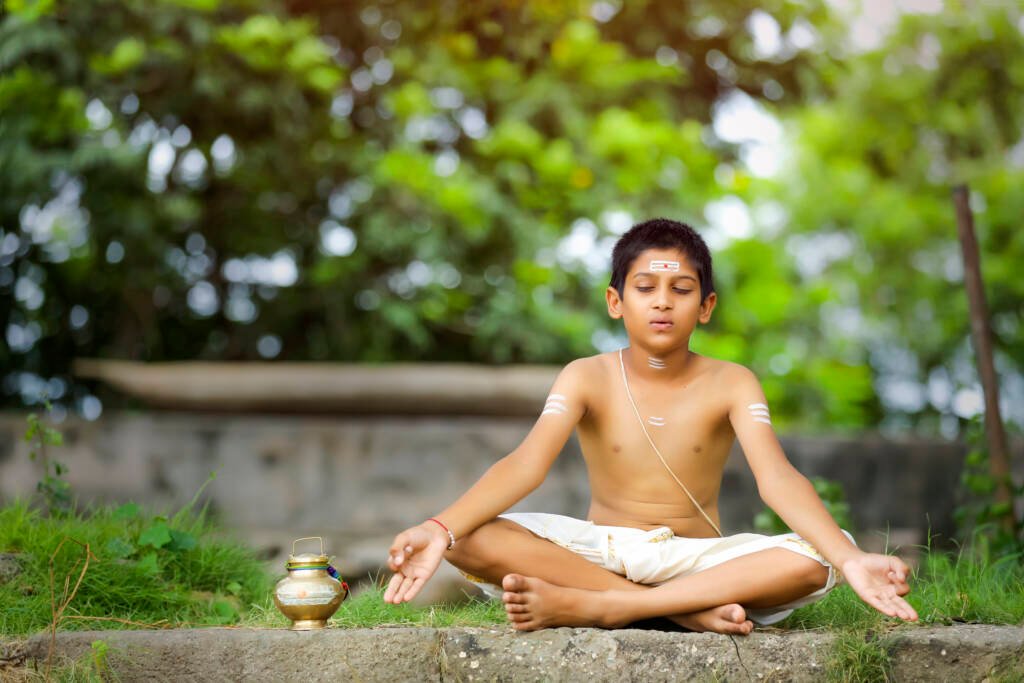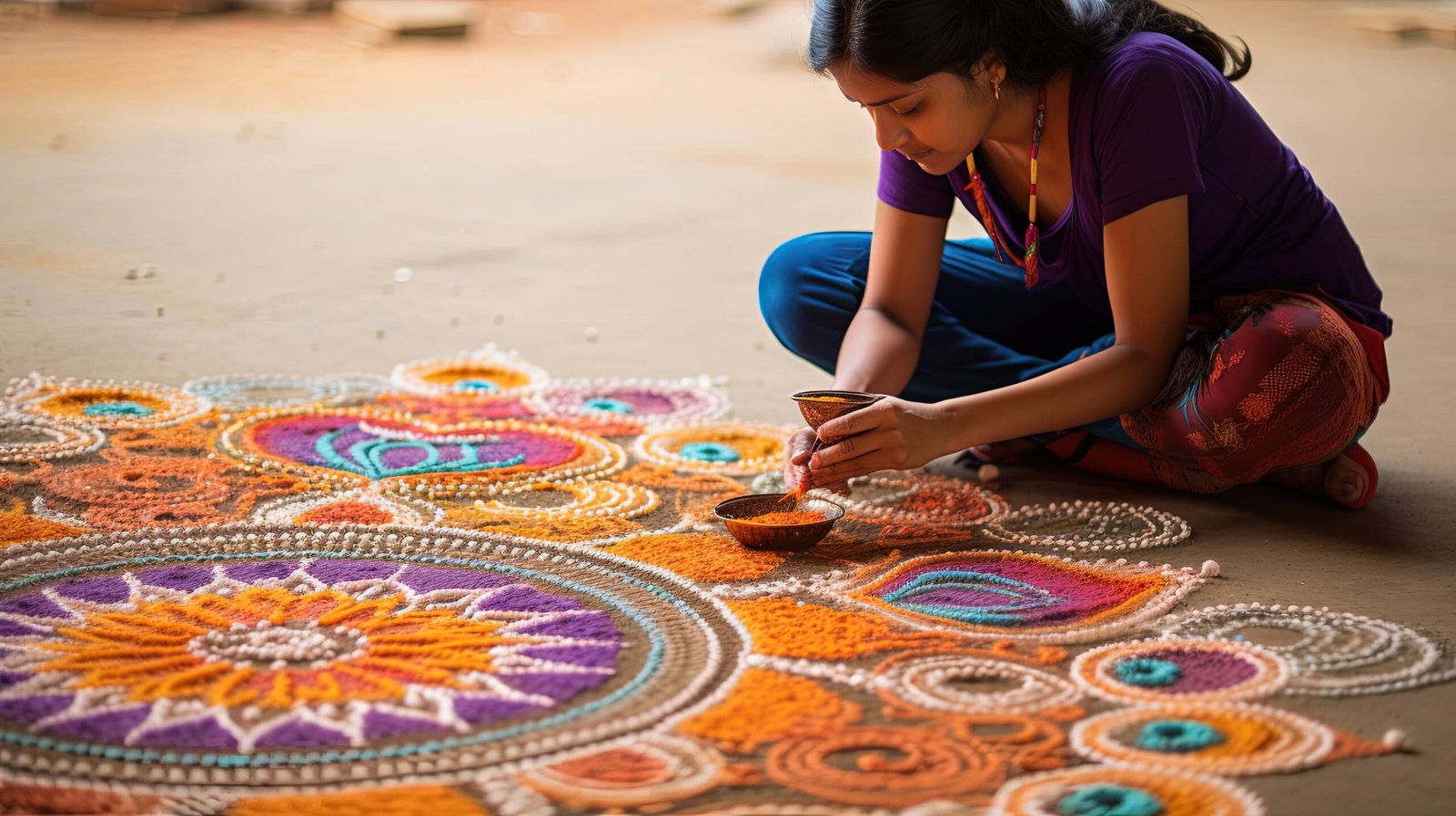Guiding students to reflect, perceive, and evolve through timeless traditions
In a world relentlessly rushing forward — where success is measured in speed, and silence mistaken for stagnation — the human spirit yearns for stillness. Our children, caught in the whirl of deadlines, screens, assessments, and social noise, are being taught to achieve, but not always to be. They are learning to chase answers, but not to observe questions. Amidst this growing chaos, Bharat offers an ageless, anchoring wisdom — the sacred art of mindfulness.
Far from a modern wellness trend, mindfulness in the Indian tradition is a deep civilizational current — flowing through the Vedas, Upanishads, Yogic practices, and everyday rituals of life. It is not a borrowed technique, but a native tapasya — an inner discipline that teaches us to live with awareness, to listen deeply, to see clearly, and to act wisely. And perhaps there is no greater need for this wisdom than in our classrooms today.
From Noise to Stillness: The Bharatiya Lens of Awareness
In the heart of the Upanishads, we are told: “Uttishthata, Jāgrata, Prapya Varān Nibodhata” — Arise, Awake, and stop not until the goal is reached. But this awakening is not only outward. It begins within — in the quiet inner revolution where the mind turns inward, the breath becomes conscious, and the self observes the self.
This is the essence of smriti (inner remembrance), viveka (discernment), and sākṣī bhāva (witness consciousness) — pillars of Indian mindfulness. The ancients did not teach children to merely know, but to awaken — to cultivate presence, patience, and purity of thought.
Every moment in the ancient gurukul system was woven with such mindful rhythm. The day began with sandhyā vandana — a practice of gratitude, reflection, and awareness. Lessons were absorbed through shravanam (deep listening), not distracted consumption. Silence was revered. Nature was the classroom. The teacher, a guide to the soul.
How distant this feels from today’s hurried, fragmented learning environments — where attention is scarce, and distraction is plenty. Yet, it is this very dissonance that makes ancient Indian mindfulness not only relevant but urgent.
.


Mindfulness in Practice: Ancient Wisdom for Modern Minds
True mindfulness is not a technique but a samskāra — a way of being that must be nurtured slowly, organically, and joyfully. Its power lies not in grand rituals, but in gentle, consistent practice. Simple tools from the Indian tradition can become profound pedagogical anchors:
-
Breath awareness through prāṇāyāma calms the nervous system and nurtures inner clarity.
-
Trāṭaka (steady gazing) builds concentration and inner stillness.
-
Mantra japa helps regulate thoughts and align inner vibrations.
-
Mauna (intentional silence) fosters deep listening and emotional self-regulation.
-
Mindful eating, drawing from the principles of āhāra vidhi, nurtures gratitude and bodily awareness.
-
Nature-based reflection, inspired by the ṛṣis, reawakens our sacred connection with the world.
These are not esoteric practices for a chosen few, but deeply human experiences that belong in every school, every classroom, and every young heart.
Bridging Ancient Wisdom and NEP 2020’s Vision
India’s National Education Policy 2020 is not just a policy document — it is a civilizational renaissance. It seeks to restore the soul of education — to move beyond rote, to nurture critical thinking, emotional intelligence, value-based living, and self-awareness. This is precisely where mindfulness rooted in Indian traditions finds its home. It aligns with the policy’s call for holistic development, experiential learning, and ethics-based education. Mindfulness doesn’t just help students study better; it helps them live better — with integrity, purpose, and joy.
Let us remember — education in Bharat was never about information alone. It was about transformation. The shishya was not merely a student of books, but a seeker of truth. Mindfulness was the path that turned knowledge into wisdom, and wisdom into character.
Educating the Inner World: A Sacred Responsibility
The true crisis of education today is not a lack of content, but a loss of center. Our children are overwhelmed, overstimulated, and often under-connected — to themselves, to nature, to meaning. In such times, reintroducing mindfulness is not a luxury. It is a responsibility.
Educators are not just transmitters of syllabi. They are sculptors of consciousness. By infusing classrooms with moments of pause, silence, breath, reflection, and intentionality, we restore education to its sacred place — not just as a means to a livelihood, but as a journey to selfhood.
Let us not reduce learning to a race. Let it become a return — to self-awareness, to purpose, to presence. Let our children learn that in the space between stimulus and response, between thought and action, between breath in and breath out — lies the power to choose, to grow, to transform.
A Return to Ourselves
Mindfulness, as lived in Bharat, is a gentle rebellion against unconscious living. It is a way of saying — I am here, fully, completely, gratefully. And what better gift can education offer than this presence — to see the world not with hurried eyes, but with a steady soul?
Let us reawaken this ancient wisdom — not to replicate the past, but to regenerate the present. Let every child know the beauty of silence, the clarity of attention, the freedom of the witness, and the joy of simply being.
For in that still, sacred space…
Learning becomes illumination.
Education becomes elevation.
And the student becomes a conscious, compassionate human being — deeply rooted, fully alive.
May we teach our children not just how to think — but how to pause, how to feel, how to see. For in the heartbeat of mindfulness lies the soul of Bharat — timeless, luminous, and free.



